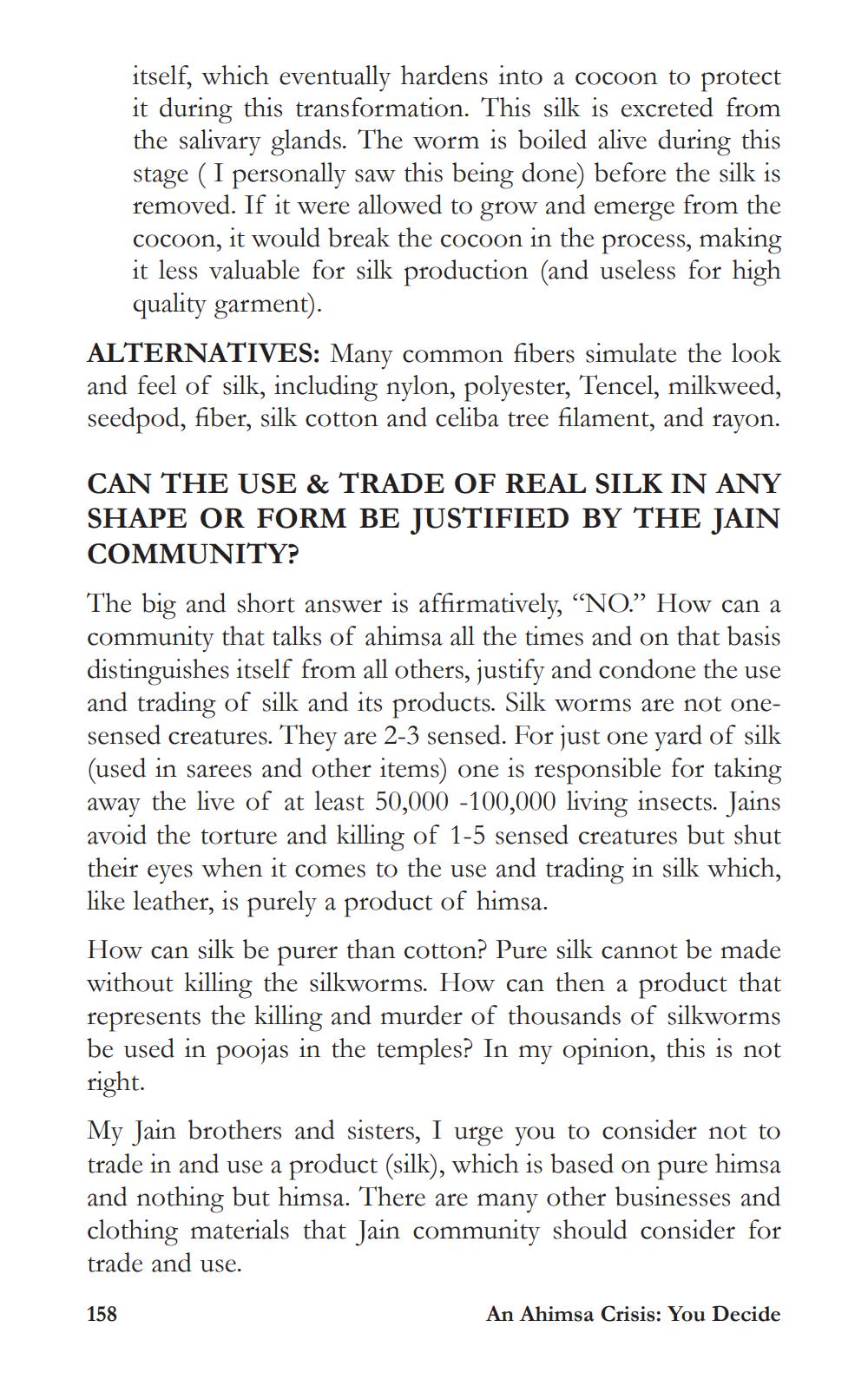________________
itself, which eventually hardens into a cocoon to protect it during this transformation. This silk is excreted from the salivary glands. The worm is boiled alive during this stage (I personally saw this being done) before the silk is removed. If it were allowed to grow and emerge from the cocoon, it would break the cocoon in the process, making it less valuable for silk production (and useless for high
quality garment). ALTERNATIVES: Many common fibers simulate the look and feel of silk, including nylon, polyester, Tencel, milkweed, seedpod, fiber, silk cotton and celiba tree filament, and rayon.
CAN THE USE & TRADE OF REAL SILK IN ANY SHAPE OR FORM BE JUSTIFIED BY THE JAIN COMMUNITY?
The big and short answer is affirmatively, “NO.” How can a community that talks of ahimsa all the times and on that basis distinguishes itself from all others, justify and condone the use and trading of silk and its products. Silk worms are not onesensed creatures. They are 2-3 sensed. For just one yard of silk (used in sarees and other items) one is responsible for taking away the live of at least 50,000 -100,000 living insects. Jains avoid the torture and killing of 1-5 sensed creatures but shut their eyes when it comes to the use and trading in silk which, like leather, is purely a product of himsa. How can silk be purer than cotton? Pure silk cannot be made without killing the silkworms. How can then a product that represents the killing and murder of thousands of silkworms be used in poojas in the temples? In my opinion, this is not right. My Jain brothers and sisters, I urge you to consider not to trade in and use a product (silk), which is based on pure himsa and nothing but himsa. There are many other businesses and clothing materials that Jain community should consider for trade and use.
158
An Ahimsa Crisis: You Decide




